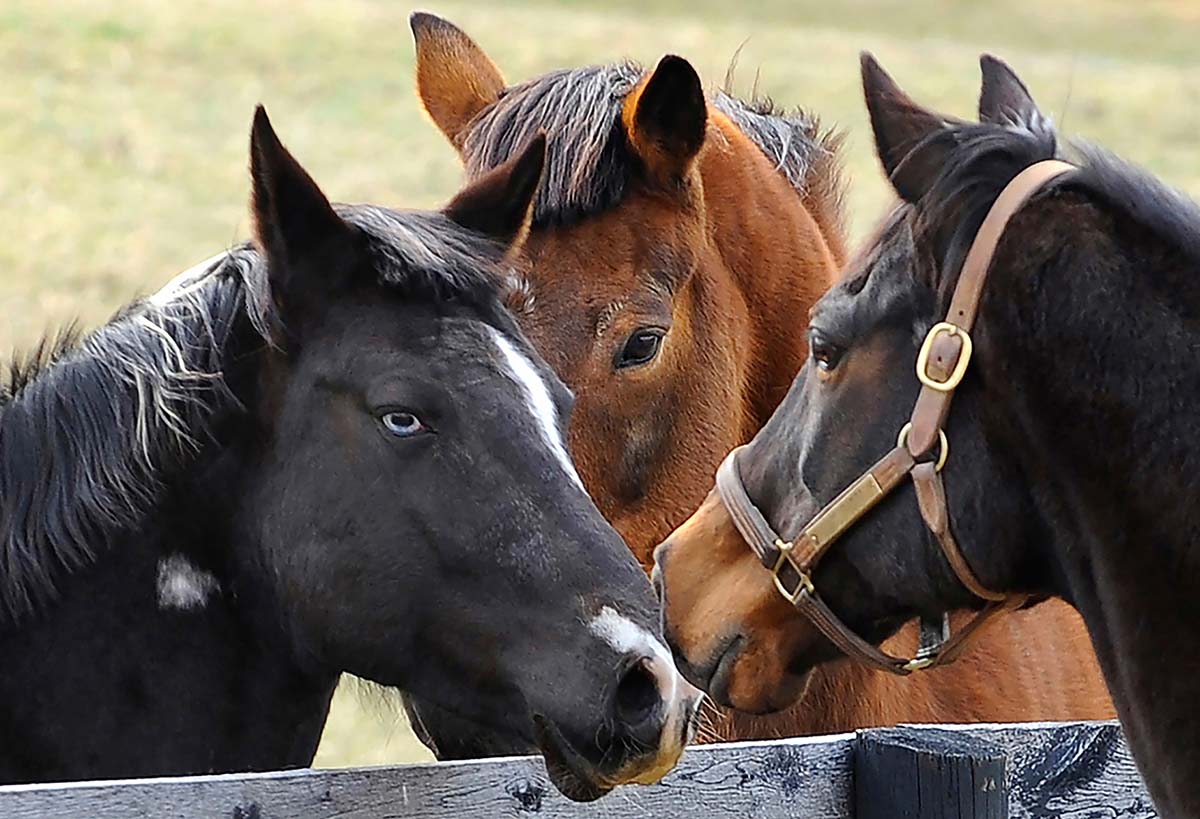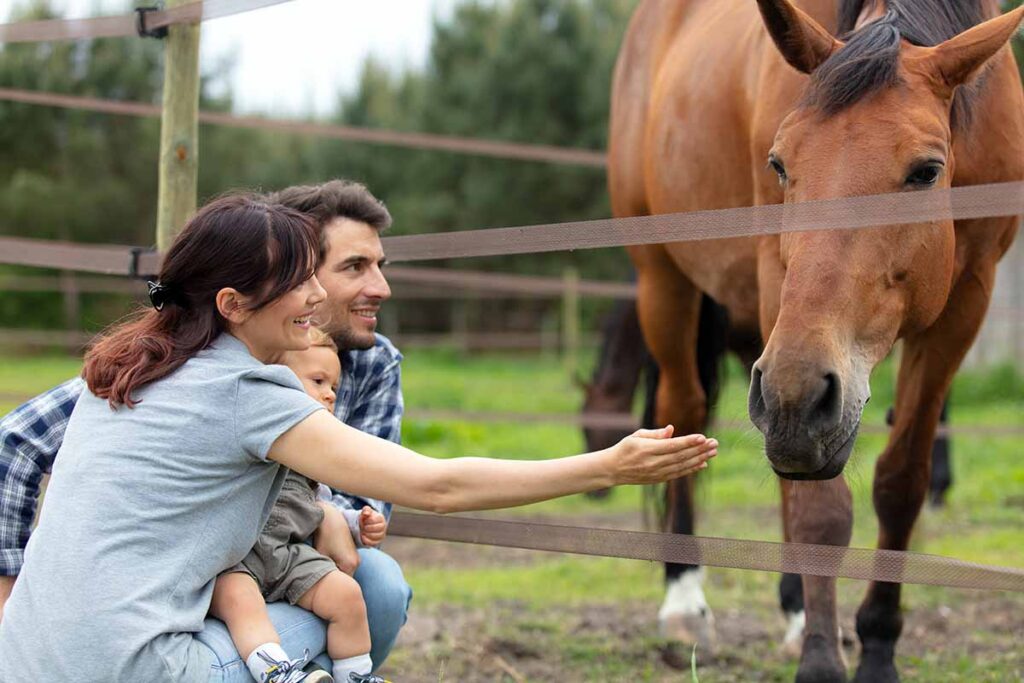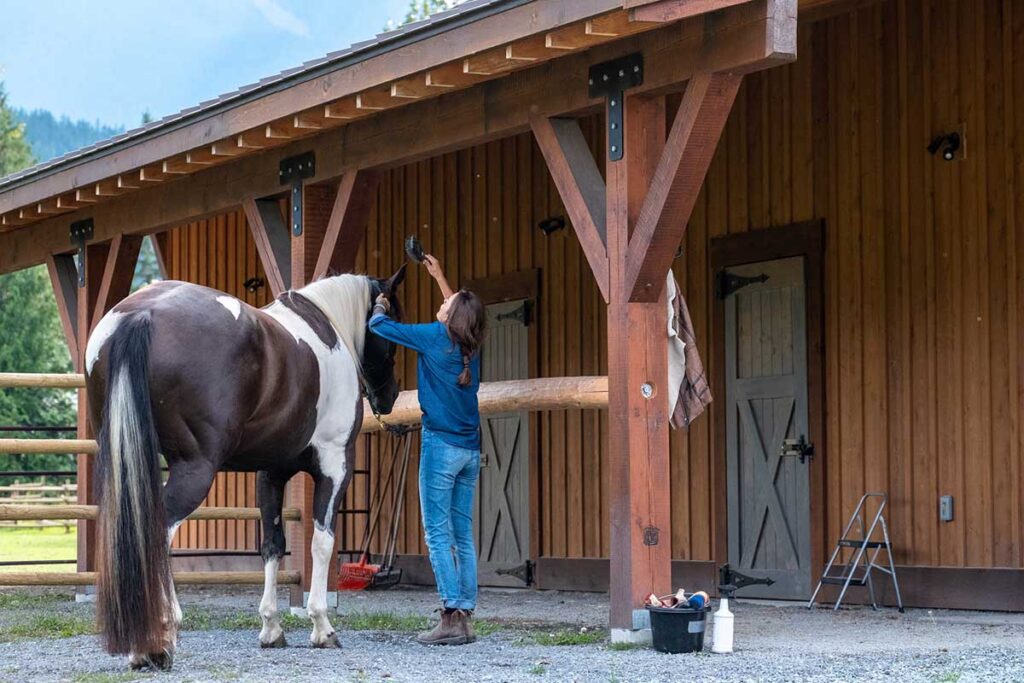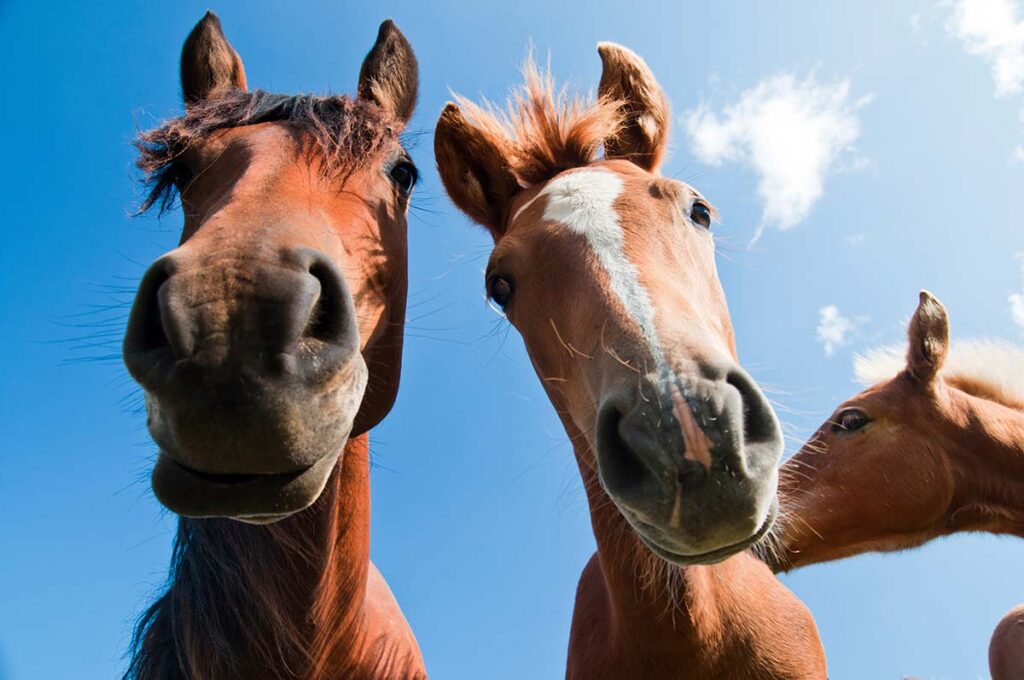When a new horse joins an established group of horses, it’s a bit like a kid’s first day at a new school. He might be a bit shy and awkward until he gets accustomed to his surroundings and makes new friends. The alpha horses might pick on him until he finds his place in the herd’s hierarchy. Simply, introducing a new horse to a herd can be tricky and unpredictable.
So if your new horse will be living with other equids at your property or a boarding barn, you’ll want to help him integrate into the herd smoothly. This is important for reducing his stress levels, ensuring he gets enough food and water, and minimizing kicks, bits, and threats from other horses.
In this article, we’ll share ways to introduce a new horse to a herd safely and effectively and what to watch for as you do.
First: Have You Taken Biosecurity Precautions?
Before you let your horse loose in a field full of strange equids, take steps to prevent him from transmitting pathogens to his new herdmates and vice versa. We refer to these best practices for keeping horses healthy as biosecurity. Here are some biosecurity measures you should take:
- Make sure you received a health certificate and proof of a negative Coggins test when you bought your horse. Also ask for a record of his deworming and vaccination history so you can stay up to date on immunizations and boosters.
- Quarantine is your first line of defense and recommended for all new horses’ arrival. It’s essential to keep your new horse isolated from the rest of the herd (ideally, in a separate paddock or separated by an empty stall) for about 10-14 days. This gives you time to watch for any signs of illness.
- Take your horse’s vital signs, or at least his temperature, twice daily to pick up on problems as quickly as possible. You’ll want to have your veterinarian treat potentially contagious equine illnesses before allowing horses to comingle.
Methods for Introducing a New Horse to a Herd Safely

Once the quarantine period is over, you can introduce the horses to each other. If you have the time and space to acclimate your horse to the herd gradually, you can do so by following these steps:
- Place the new horse in an adjacent fenced paddock near the established herd for a couple of days. This allows the horses to sniff, nuzzle, and interact with each other in a controlled and safe environment.
- Once the horses have had an opportunity to interact with each other across the fence, you can progress to the first physical contact. Choose a friendly, middle-ranking herd member, and turn him out with your horse.
- If all is well after a few days, add another horse, then another, until the entire herd is together. Alternatively, you can add your horse and his new buddy directly to the herd. Do so at least 20 minutes after feeding. Horses are less likely to be aggressive and more likely to be relaxed and grazing post-mealtime.
A few considerations: If you choose to introduce horses in adjacent paddocks, ensure the fencing is safe and secure so no one gets a limb caught or takes out a fenceline. Also make sure your turnout areas and shelters offer horses plenty of space to escape aggressive herdmates. Don’t turn the newbie out with the herd when they’re clustered around the gate, which could put you in strike range of hooves and teeth.
Things to Watch For After Introducing a New Horse to a Herd
Expect to see a few threats and dominance behaviors initially as the horses work out their new hierarchy. These might include pinned ears, nipping, kicking, and chasing—but don’t worry, this is normal. Do keep an eye out for especially aggressive and persistent behavior, however. You might have to remove your horse or the main offender if they can’t work out a pecking order themselves.
In the days and weeks after adding a new horse to the herd, check each horse daily for cuts, bites, and lameness. Watch your horse’s weight, hydration status, and appetite, so you can determine if other horses are keeping him from food and water. You might need to place hay piles and water sources in several areas to give the horses space to eat and drink their fill.
Take-Home Message
By introducing a new horse to a herd gradually and wisely, you can help keep both horses and handlers safe. Take adequate biosecurity precautions, and supervise horses closely after adding the newbie. With these tips, you can help maintain a harmonious and healthy herd.
Are you enjoying this content? Sign up for My New Horse’s FREE newsletter to get the latest horse owner info and fun facts delivered straight to your inbox!








